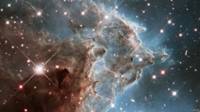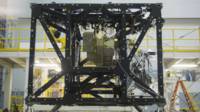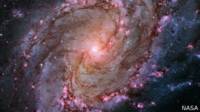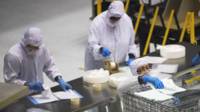- April 24, 2015
Share

25 years of great photos. Since he’s in space, Hubble has given us images of the universe as never before had seen.
See the best photos taken by the Hubble Universe in 25 years
But the couple celebrated their anniversary, and despite it is still showing signs of being active, NASA, the European Space Agency (ESA) and its international partners are working flat on the telescope to replace it.
James Webb Named in honor of the man who led the fate of the US space agency between 1961 and 1968 has a power 100 times greater than Hubble, say the scientists in charge of the project, will enable unprecedented imaging of the first galaxies that formed in the early universe.
“If the Hubble we can see the newly formed galaxies when the universe was only a billion years, the James Webb will be able to observe even when galaxies were younger and were still being formed, “explains the BBC Pedro García Lario, an astrophysicist at ESA.
is so large that not fit into the pitcher. The mirrors folded and will be deployed once the unit is in space
What is Unlike its predecessor?
In principle and this is most obviously in size.
Its main mirror has a diameter of 6.5 meters (compared to 2 4 of Hubble) and consists of 18 hexagonal mirrors that together form one.
“It’s so large to fit inside the pitcher. The mirrors will folded and deployed once the device is in the space, “says García Lario
Its launch-from the European base of Kourou in French Guiana Francesa- is scheduled for October 2018
Also read:.. The smiling emoticon us from the Universe
A department in space
“Another peculiarity is that their instruments are optimized to work in the infrared,” says astronomer.
“This means that we will be able to see a light of a different wavelength at which we observe with our eyes”.

This allows you to look further into the past than Hubble.
Why? As the universe’s expansion is accelerating, ancient galaxies are moving at high speed.
As they do, their light is stretched to a greater wavelength, which makes them seem redder
And, to make infrared observations, the James Webb may reach the most distant objects.. the first stars and galaxies formed after the Big Bang
So, expect pictures to allow them to figure out how from the initial basic elements -gas and dust that was in the Universe immediately after the Big Bang “were formed over time so gigantic and stable structures such as galaxies,” says García Lario
Read:. The stunning images of the “Pillars of Creation” captured by the Hubble
Another peculiarity is that their instruments are optimized to work in infrared. This means that we will be able to see a light of a different wavelength at which we observe with our eyes
The researchers also hope to image planets orbiting stars other than our sun to analyze the chemical and physical composition of the atmosphere from the light coming specifically from them (which is not possible with the . Hubble)
But back to the issue of size, we should clarify that it is not only determined by the size of your mirror: as is adapted to observe in infrared, the device is protected from the rays of Sun by a shield which also peel off in orbit, approximately 21 and 14 meters.
“They’re like 200 square meters. It’s like an apartment!” says García Lario.
Moreover, rather than orbit the Earth as its predecessor (approximately once every 97 minutes at an altitude of between 550 km and 600 km) the James Webb will be at a point known as Lagrange 2, a 1.5 million miles of our planet
will orbit around the sun, keeping the distance from Earth
Read:.. They obtain images of an asteroid breaking into pieces
Basic Answers

Unlike Hubble, whose long-term mission included regular visits from astronauts to repair or replace instruments, the design of the James Webb assumes that anyone can visit him at this point so distant from Earth.
Therefore, “everything has to do well in the first instance,” said García Lario.
Once you are in space, letters are played. It can not happen what happened with Hubble he should expect a visit from a ferry to redress its flaws.
“Adapt, maximize, improve how we operate the instruments yes it can be done, but changing something, no “he added.
Your life is estimated at about five years, but scientists hope that if all goes well, can be operating for a decade.

Will this top substitute to interest people in the same way that the Hubble?
A García Lario will no doubt.
“He will live up to what is expected because it will provide answers to very basic questions like where we come from, where we stand in the universe, and help determine if life is an exception or the norm in the Universe “.
” All these issues concern the general public. “
Follow us on Twitterbbc_ciencia
No comments:
Post a Comment